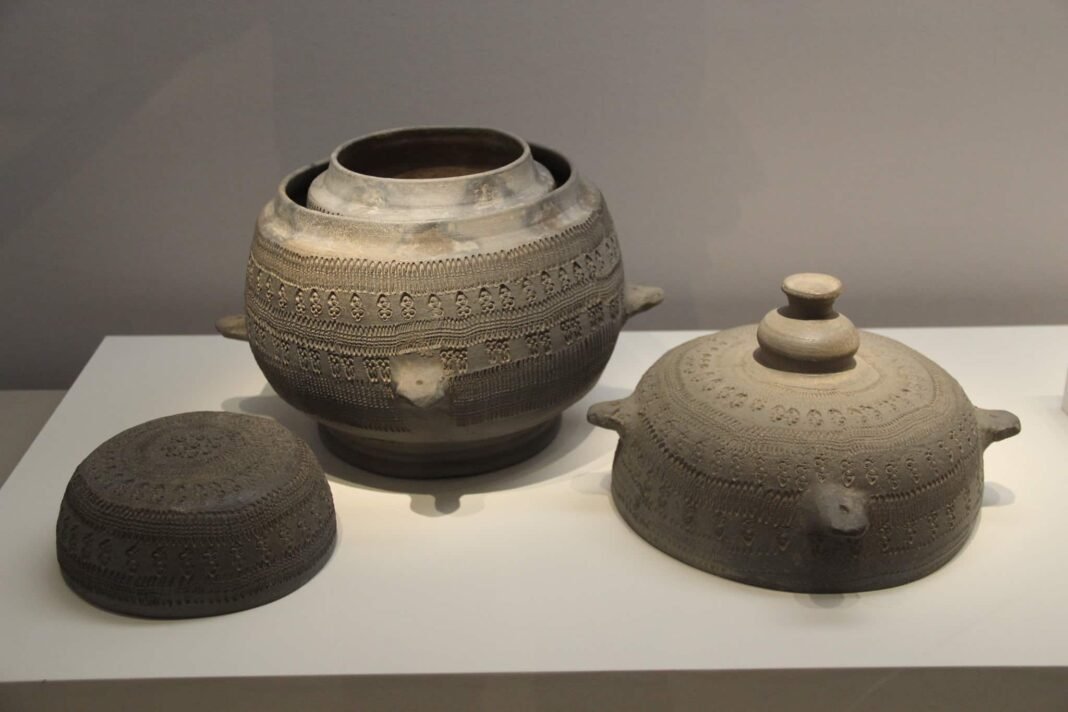
A major archaeological discovery of a Silla Kingdom tomb in Korea has revealed rare artifacts buried with a high-ranking warrior, offering a detailed look at the power and status of elite society more than 1,500 years ago.
The wooden-chamber burial was uncovered beneath a large mound in Gyeongju’s historic Hwangnam-dong district, once the capital of the Silla Kingdom, which ruled the Korean Peninsula from 57 BCE to 935 CE.
The tomb lies below the previously excavated Hwangnam-dong No. 120 mound, known for its stone-mound wooden-chamber structure. Officials say the newly identified chamber likely belonged to an individual connected to the kingdom’s military leadership.
Rare horse armor signals military strength
Inside the chamber, archaeologists found the remains of a man buried with an iron sword, a full set of armor, and a helmet. Protective gear for a horse was also recovered, marking only the second known case of Silla horse armor discovered to date. The first was found at the Joksaem C10 mound, also in Gyeongju.
Researchers say the find confirms historical descriptions of heavily armored Silla cavalry and highlights the military might of the kingdom during the fifth century.
A fragment of a gilt-bronze crown also drew attention. Scholars believe it may be the oldest example yet unearthed from a Silla royal or noble burial. They say it could deepen understanding of early Silla craftsmanship and elite identity.
Possible sacrificial burial uncovered
The remains of a second individual were found next to the warrior. The body is believed to have been an attendant who may have been sacrificed and buried as part of the funeral ritual.
A preliminary dental examination indicates the main figure died in his early 30s. Measurements of the attendant’s limb bones suggest a height between about 5 feet 3 inches and 5 feet 5 inches (160–165 centimeters). According to the Silla Cultural Heritage Research Institute, this marks the first fully preserved example of a potential sacrificial burial from the Silla period.
Mixed architecture shows cultural transition
The tomb’s design features a wooden chamber beneath a stone-covered wooden mound. Archaeologists say this blended form demonstrates a transition in burial architecture as Silla society developed new political and social structures.
A Korea Heritage Service official said the find offers more than a new mark on the excavation map. It provides physical evidence about how elite burials evolved and may help clarify changes in Silla power structures.
Researchers have been excavating the site since 2018. Farming activity caused earlier damage, but the project has continued, confirming six wooden-chamber tombs beneath the No. 120 mound so far.
Public viewing during the APEC summit
The timing of the discovery aligns with an international event. Gyeongju will host the Asia-Pacific Economic Cooperation Economic Leaders’ Meeting from Oct. 31 to Nov. 1.
From Oct. 27 to Nov. 1, the excavation site will open to the public. Key relics — including the crown fragment, armor, helmets, and human remains — will be displayed at the National Research Institute of Cultural Heritage in Gyeongju.
KHS administrator Huh Min said Korea hopes to share the value of this cultural heritage with the world while ensuring preservation and visitor safety.


